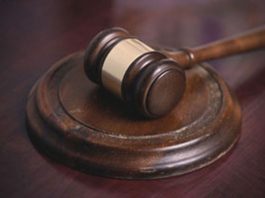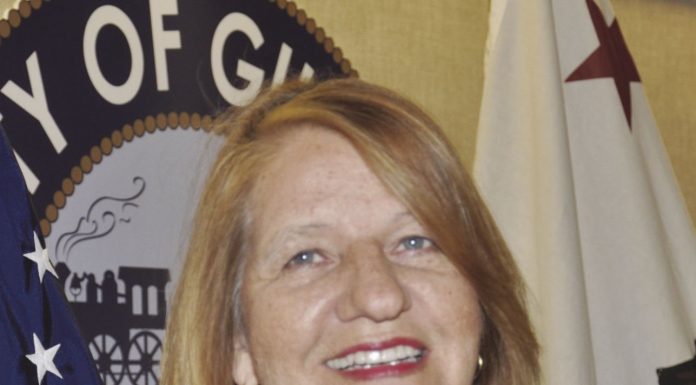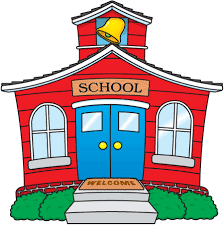Editorial: Yes on Measure E
If you want to make America great again, there’s something you can do right away: Vote yes on Measure E and support Gilroy’s schools.With one swoop of your pen and a serious commitment of $60 for every $100,000 of property you own, you can build a new elementary school and fix up degrading middle schools. You can keep all of the district’s schools top notch, which is what we think makes America and our community great.For some reasons that make no sense to us, schools, teachers and taxes have become anathema in this country over the past 40 years. Everyone wants the best services but no one wants to pay for them.If you go back to a time a lot of people think America was great (and we think it’s still great, by the way), you might try the 1950s and 1960s when tax rates, particularly on the rich, were double and triple what they are now. Under Dwight D. Eisenhower, the rich paid 91 percent of their income. Under Richard M. Nixon, it was down to 77 percent. But then it kept dropping as rich people gained more power and convinced a large number of Americans that taxes were bad, particularly taxes on the rich. Back then, people didn’t mind the taxes as much because they knew they were making America great. They were proud of their country and still incredibly rich, despite the taxes.The earlier tax rates afforded us immeasurable greatness. We built a transcontinental highway system. We built the biggest buildings in the world. We went to the moon. We built great schools and free public university systems.But now schools have to raise money by holding their hats out like beggars. What’s happened to this country, where no one asks us to vote to spend trillions on wars both parties later realize were mistakes, but we act like the schools are criminals for wanting to give teachers a living wage and give kids modern buildings and educational systems?How do so many people--some of them wealthier people who send their children to private schools-- figure taxes to help schools are a bad thing? There are exceptions, like Don Christopher, a businessman who puts his funds where his heart is. We aren’t saying the schools and their administrators are perfect. We’ve spent plenty of time dissecting their faults, poring over every document. We aren’t happy about some of the lack of transparency we’ve seen. We don’t like that they don’t live-stream school board meetings. We don’t like how they rushed this election without time to make a stronger case and can’t or won’t even name who solicited the highest donations. The list of projects the money will be spent on is not detailed enough. We question some of the ties between contractors and the board. We don’t like the fact that Christopher High School came in so over budget that its promised theater was never built, the track and field needed private funding to be completed and seven years after the building was finished, it needs repairs.But after putting them through the investigative wringer, we see no reason not to put up another $170 million to keep our schools on the cutting edge. (For comparison’s sake, the Iraq War cost $720 million a day.) The bottom line is that we have to support our schools, whatever it takes. To do anything less is criminal. It’s the opposite of making America great.In Finland and China teachers are as valued as doctors and CEOs. Those countries haven’t forgotten the value of great education. Rather than criticizing teachers unions we’d like to see the schools pay the way private companies do. That would guarantee the best and the brightest get the jobs and hold them.If you want to look at just the bottom line: this isn’t so much a tax as it is an investment. Nothing will make property value go up more than a great school system. Gilroy homes are already a bargain in Silicon Valley. Add more school buildings like Christopher High and more programs like Gilroy High’s biomedical training, and watch the values increase far more than the taxes.
Most School Bond Backers are from out of Town
More than 90 percent of the $37,696 in the Yes on Measure E campaign chest is from outside Gilroy—most from firms, including one in New York, whose business with the school district exceeds $33 million just since 2011.
Gilroy School Chief Asks for Voter Support
At this time, we’re housing our children in school buildings where their own parents attended classes 30 or 40 years ago. The average age of schools in the Gilroy Unified School District is 30 years old and five schools are more than 50 years old. The District has taken great care of the schools but they need to be renovated and rebuilt.
Today is the last day to register to vote
Eligible Santa Clara County residents who have not registered to vote in the June 7, 2016 Presidential Primary Election can take advantage of special extended hours today to ensure that they will be able to cast a ballot. The Registrar of Voters’ Office will remain open until 8:00 p.m. today for those who wish to complete their voter registration forms or vote early. Today is the last day to register to vote or to re-register with a different party preference in order to vote for a presidential candidate of the voter’s choosing. Voters who do not wish to travel can register online using the California Online Voter Registration website. Online registration must be completed before midnight in order to meet the deadline. Alternatively, voters can sign and return paper registration forms by mail; paper registration forms that are postmarked today will be accepted. Paper registration forms are available at post offices, public libraries, fire stations, city halls, and most local government offices. The Registrar of Voters’ Office encourages early voting. Voters who prefer to cast their ballot in person can vote early at the Registrar of Voters’ Office every weekday and on the two weekends prior to the election, or at an Early Voting Center on the two weekends prior to the election. Vote by Mail voters can vote early by mailing their ballots or dropping them off at one of 52 drop-off, drive-thru, and early voting sites before the election. No postage is necessary for voters returning their ballots using a postage-paid return envelope that is included with every Vote by Mail ballot. In previous elections, voters had to pay the cost of return postage, which frequently exceeded a single first-class stamp. Notably, Santa Clara is only the second county in the state to feature prepaid postage for Vote by Mail ballots. Registrar of Voters Shannon Bushey stated, “There is no more important action in a democracy than voting. The Registrar of Voters’ Office is passionate about increasing voter turnout. We hope that we will make it easier to vote by providing prepaid postage for all Vote by Mail ballots, and by providing Early Voting Centers for all voters in the county. “No Party Preference” VotersThe Registrar of Voters’ Office mailed over 150,000 postcards to “No Party Preference” (Decline to State or Non-Partisan) voters on March 24 to inform them about voting for a presidential candidate in the primary election. Voters who registered with no party preference may request a ballot to vote for a candidate of the Democratic, American Independent, or Libertarian parties. The postcard sent by the Registrar of Voters’ Office advises “No Party Preference” voters of their option to choose a party ballot – Democratic, American Independent, or Libertarian – that they would like to vote. This postcard does not change voters’ party affiliation, but does allow voters to vote for the presidential candidate listed on their chosen party ballot. Voters who registered with no party preference and who would like to vote for the presidential candidate of the Republican, Green, or Peace & Freedom parties must re-register to vote with that party by today, Monday, May 23. The Republican, Green, and Peace & Freedom parties do not allow “No Party Preference” voters to vote their party ballot. A voter should complete a new registration form if he or she has moved, changed a name(s), or would like to change his or her political party preference. To register to vote in Santa Clara County, a voter must be a U.S. citizen, at least 18 years old on or before Election Day, a Santa Clara County resident and not imprisoned or on parole for a felony. Today is the last day to register to vote in the June 7, 2016 Presidential Primary Election. Registration can be done online at Register to Vote. Voters who would like to check their registration status may do so at Check Your Registration Status. Voters may also request to vote by mail for this election at Request a Vote by Mail Ballot, or they may request to become permanent Vote by Mail voters at Permanent Vote by Mail. First In, First CountedVoters are encouraged to mail their ballots as soon as possible. Completed ballots that are received prior to Election Day are included in the results released at 8 p.m. on Election Night. Early VotingAny voter in Santa Clara County can vote early at the Registrar of Voters' Office, which is located at 1555 Berger Drive, Building 2, San Jose, CA 95112. Day(s) Date(s) Hours Monday – Friday May 9 – June 6 8 a.m. to 5 p.m.Saturday May 28 9 a.m. to 3 p.m.Sunday May 29 9 a.m. to 3 p.m.Saturday June 4 9 a.m. to 3 p.m.Sunday June 5 9 a.m. to 3 p.m. Tuesday June 7 (Election Day) 7 a.m. to 8 p.m. Early Voting CentersDuring the two weekends prior to Election Day, voters have the option of casting their ballot at any one of five convenient Early Voting Centers or at the Registrar of Voters’ Office. Once voters arrive at the Early Voting Center of their choice or at the Registrar of Voters’ Office, they can obtain a ballot and cast it in person, or they can take it home to complete later. Voters can also drop off their completed Vote by Mail ballot, receive a replacement for a lost or damaged Vote by Mail ballot, or use a touch screen voting machine. The touch screen voting machines are accessible to blind and visually impaired voters. A ballot that is cast at an Early Voting Center or at the Registrar of Voters’ Office must be sealed inside a signed envelope and the voter’s signature must be verified before the ballot can be counted. Day(s) Date(s) Hours Saturday - Sunday May 28 – May 29 12 p.m. to 5 p.m. Saturday - Sunday June 4 – June 5 12 p.m. to 5 p.m. The Early Voting Centers will be located at: Gilroy Library – 350 W. Sixth Street, Gilroy, CA 95020San Jose Public Library – Joyce Ellington Branch – 491 E. Empire Street, San Jose, CA 95112Los Altos Library – 13 S. San Antonio Road, Los Altos, CA 94022Santa Clara City Library – 2635 Homestead Road, Santa Clara, CA 95051San Jose Public Library – Educational Park Branch – 1772 Educational Park Drive, San Jose, CA 95133 Ballot Drop-Off SitesBeginning May 9 and continuing through Election Day, Vote by Mail voters have the option of dropping off their completed ballots at the following locations: Open during normal business hoursSanta Clara County Government Center – 1st Floor, 70 W. Hedding Street, San Jose, CA 95110 Monte Sereno City Hall – City Clerk’s Office, 18041 Saratoga-Los Gatos Road, Monte Sereno, CA 95030Campbell City Hall – City Clerk’s Office, 70 N. First Street, Campbell, CA 95008 Morgan Hill City Hall – City Clerk’s Office, 17575 Peak Avenue, Morgan Hill, CA 95037Cupertino City Hall – City Clerk’s Office, 10300 Torre Avenue, Cupertino, CA 95014 Mountain View City Hall – City Clerk’s Office, 500 Castro Street, Mountain View, CA 94041Gilroy City Hall – City Clerk’s Office, 7351 Rosanna Street, Gilroy, CA 95020 Palo Alto City Hall – City Clerk’s Office, 250 Hamilton Avenue, Palo Alto, CA 94301Los Altos City Hall – City Clerk’s Office, 1 N. San Antonio Road, Los Altos, CA 94022 San Jose City Hall – City Clerk’s Office, 200 E. Santa Clara Street, Wing 2, San Jose, CA 95113Los Altos Hills Town Hall – Town Clerk’s Office, 26379 Fremont Road, Los Altos Hills, CA 94022 Santa Clara City Hall – City Clerk’s Office, 1500 Warburton Avenue, Santa Clara, CA 95050Los Gatos Town Hall – Town Clerk’s Office, 110 E. Main Street, Los Gatos, CA 95030 Saratoga City Hall – City Clerk’s Office, 13777 Fruitvale Avenue, Saratoga, CA 95070Milpitas City Hall – City Clerk’s Office, 455 E. Calaveras Boulevard, Milpitas, CA 95035 Sunnyvale City Hall – City Finance Office, 650 W. Olive Avenue, Sunnyvale, CA 94086Martin Luther King Library – Inside drop-box, 150 E. San Fernando Street, San Jose, CA 95112 Mitchell Park Library – Inside drop-box, 3700 Middlefield Road, Palo Alto, CA 94303 Rose Garden Library – Inside drop-box, 1580 Naglee Avenue, San Jose, CA 95126 Open 24 hours a daySan Jose State University – at Clark Hall Bldg. & The Villages, 1 Washington Square, San Jose, CA 95112 West Valley College – at Admissions near the flag pole, 14000 Fruitvale Avenue, Saratoga, CA 95070De Anza College – at Main Quad near the flag pole, 21250 Stevens Creek Boulevard, Cupertino, CA 95014 Gavilan College – at Student Center, 5055 Santa Teresa Boulevard, Gilroy, CA 95020Evergreen Valley College – at Cafeteria located in Gullo 1, 3095 Yerba Buena Road, San Jose, CA 95135 Mission College – at Drop off/Pick-up Loop, 3000 Mission College Boulevard, Santa Clara, CA 95054Foothill College – at Building 1900-Administration near the flag pole, 12345 El Monte Road, Los Altos Hills, CA 94022San Jose City College – at Student Center, 2100 Moorpark Avenue, San Jose, CA 95128Berryessa Library – Outside drop-box, 3355 Noble Avenue, San Jose, CA 95132 Milpitas Library – Outside drop-box, 160 N. Main Street, Milpitas, CA 95035Campbell Library – Outside drop-box, 77 Harrison Avenue, Campbell, CA 95008 Mountain View Public Library – Outside drop-box, 585 Franklin Street, Mountain View, CA 94041Central Park Library – Outside drop-box, 2635 Homestead Road, Santa Clara, CA 95051Morgan Hill Library – Outside drop-box, 660 W. Main Avenue, Morgan Hill, CA 95037Cupertino Library – Outside drop-box, 10800 Torre Avenue, Cupertino, CA 95014Pearl Avenue Library – Outside drop-box, 4270 Pearl Avenue, San Jose, CA 95136Gilroy Library – Outside drop-box, 350 W. Sixth Street, Gilroy, CA 95020 Saratoga Library – Outside drop-box, 13650 Saratoga Avenue, Saratoga, CA 95070Los Altos Library – Outside drop-box, 13 S. San Antonio Road, Los Altos, CA 94022 Tully Community Library – Outside drop-box, 880 Tully Road, San Jose, CA 95111Los Gatos Library – Outside drop-box, 100 Villa Avenue, Los Gatos, CA 95030 Woodland Branch Library – Outside drop-box, 1975 Grant Road, Los Altos, CA 94024 Drive-Thru Ballot Drop-Off SitesOn Saturdays, May 28 & 29 and June 4 & 5, from 10 a.m. to 3 p.m., Vote by Mail voters will have the option of dropping off their ballots without getting out of their vehicles at convenient Drive-Thru Ballot Drop-Off Sites. The sites will be located at: Curtner Light Rail Station – Canoas Garden Avenue at Curtner Avenue, San Jose, CA 95125 Morgan Hill Transit Center – Main Avenue at Hale Avenue, Morgan Hill, CA 95037Hostetter Light Rail Station – Capitol Avenue at Camino del Rey, San Jose, CA 95132 Westgate Shopping Center –back lot near Hamilton Avenue, 1600 Saratoga Avenue, San Jose, CA 95129Mayfield Soccer Complex – Page Mill Road at El Camino Real, Palo Alto, CA 94304 For more information, contact the Registrar of Voters’ Office at 1-408-299-VOTE (8683) or toll-free at 1-866-430-VOTE (8683), or visit www.sccvote.org. # # #
A New Plan for Homelessness
The people who run Gilroy’s cold weather shelter are changing direction, making the center a refuge that provides services, rather than a place for quick stops. Jan Bernstein Chargin, who runs the Compassion Center, explains why this could help and what other new services will be available. 1. What is the new admittance policy at the Gilroy Armory Cold Weather Shelter? Why did that come about and what are the aims of the change?A: Through this winter, the Gilroy Armory Cold Weather Shelter has been "first come, first serve" each night. People would leave in the morning not knowing if they would have a place to sleep the following night. In order to ensure getting a space, therefore, people had to line up early, and carry all of their belongings with them, every day. This makes it hard to look for work, go to school, or work on long-term solutions. We have asked that, starting next year, the shelter be operated on a case management basis -- with associated day services and a referral process. Once admitted, individuals will know they have their spot assured for the season, and will be able to work towards their goals for stability, jobs, and housing. Another change we have requested is that homeless individuals from South County be given preference for the spaces at the shelter. This year, for the first time, the North County shelter was operated on a referral basis, only accepting referrals from North County agencies. That left the Gilroy shelter as the only one in the county operating as a first-come, first-serve countywide shelter. The police department believes this had detrimental impacts on the community.2. How could "tiny homes" be used to address home insecurity in Gilroy? What are the challenges in implementing such an initiative? What is the status of "tiny homes" in Gilroy?A: Communities around the nation are starting to consider and develop "tiny homes" as one of the ways of addressing homelessness. The benefits are that they can be used for short-term shelter or longer-term housing at a much lower cost than traditional construction. They can offer the privacy and autonomy that is impossible in a typical "shelter" configuration, as well as an attractive community setting. The challenge is to identify and get through all of the regulatory obstacles. Because this is such a new approach, our codes and ordinances have not yet caught up with it. The City of Fresno has recently adopted an ordinance addressing Tiny Homes that could be a starting point for Gilroy. We are planning an open house for our prototype Tiny Home (see photos on our Facebook page) [ https://www.facebook.com/gilroycompassioncenter/ ]Gilroy Compassion Center. (Date to be announced.) The Gilroy Housing Advisory Committee ( I am a member) has asked if we could bring the Tiny Home (currently located at Los Banos RV, where it was built) for the May 16 City Council meeting. I am working to see if this will be possible. This first Tiny Home is funded by Santa Clara County.3. Please provide a comment on the Compassion Center moving to a new location in June. Do you expect to provide similar services?A: We are hoping to be able to announce our new location very shortly. We are indebted to Jim Currier, owner of Flowstar, for his generosity in providing us a building to use rent-free for the first five years of our existence. Without Jim, there would be no Gilroy Compassion Center. However, now that he is selling the building, we are looking towards the future in a new location. We hope to be able to provide most of the current services: mail and message center, HMIS (County database), referrals, transportation assistance, clothing, hygiene supplies, bathrooms, daytime respite from the streets.4. We always hear that localities up north are "transporting" or "bussing" or in some way, migrating homeless folks to south county and Gilroy, especially. What do you say to this? How does closing a shelter in San Jose or clearing a homeless encampment in another jurisdiction impact homeless populations in Gilroy?A: The majority of people who are homeless in Gilroy at any point in time are long term residents, formerly HOUSED in Gilroy. Many of them grew up here, went to school here, had businesses here! The second-largest group is from Morgan Hill / San Martin. That being said, in the winter when the armory has been open, we have often seen many individuals who come to Gilroy to access the armory.However, it should also be remembered that homeless Gilroy residents also go to San Jose and Morgan Hill to access shelter, housing, transitional housing, and other services. There is no year-round shelter in Gilroy, no women's shelter, no year-round family shelter,-- for these services our residents must often go to other cities.5. I was told at Destination:Home that there are currently new housing projects underway in San Jose, as adding new housing units is critical in addressing homelessness in the region. Do you expect that new housing being constructed north of the county will impact homeless populations here in Gilroy? Do you know of any plans to construct new housing for the home insecure here in Gilroy?A: Disclosure - I am a board member for Destination: Home. Our Community Plan to End Homelessness calls for the construction of 5,000 additional units of affordable housing. We know that the best way to END homelessness is with permanent housing. In order to succeed, we need every community to participate. San Jose has made a strong commitment and is getting started on several new projects. Although Gilroy has several low-income projects in the pipeline, they will still be too expensive for most of the people who are homeless. We need a lot more housing that is affordable for people at the lowest end of the income scale -- what is called Extremely Low Income. These are households whose primary source of income is SSI, other benefits, or minimum wage. The need is so great that it will take years of construction before we "see" an impact -- however, we know how much it means to our clients when they get housing, and we have certainly seen people housed in San Jose when units have become available.6. What are the needs of the Compassion Center? I see that a golf tournament is coming up in June -- how do you stand in donations? How much support do you receive from the city of Gilroy?A: Money! We gratefully accept donations and encourage friends and supporters to support our first Golf tournament on June 24. Money is an ongoing need, so that we can keep the doors open. We have two grants from the City of Gilroy -- one from the Housing Trust Fund and one through CDBG ( Community Development Block Grant). Together these will provide roughly $48K for the Day Center next year. The Day Center operates with just one paid staff member, our Program Director Daleen Pearce -- all the rest are volunteers.We have also received grants from Santa Clara County -- $10K for the Tiny Home, and roughly $90K this past winter to help 21 homeless families with motel vouchers and case management. We were also recently granted a contract to put together a proposal for Nontraditional Housing -- we will be really working through the plan to create a Tiny Homes Village in Gilroy (and also one farther north.)Needs include volunteers, both in the trenches and on the Board of Directors and Advisory Board, and donation of the supplies we use every day.7. I see a gofundme.com fundraising campaign for tents for the homeless in Gilroy. What are the merits in this type of activity? The county rejected a proposal last year to extend stays in county parks for the homeless, with supervisor Wasserman publicly saying the parks intended use was for recreation - not housing.A: The Almost Home Camping program began as a pilot project in 2014-- Due to the cost and logistics it is a very small program -- two to four campsites at a time (there are hundreds of campsites in the county park system so the impact is negligible.) Many people don't realize that staying in campgrounds is a strategy often used by homeless people whether or not the Compassion Center is involved. Our campers have provided referrals for help to many of the homeless they have met at the campgrounds. Because there is no year-round shelter in South County, and it is illegal to camp outside of the campgrounds, there really are not many better options yet.Although the request for extended stays was rejected, we are still able to help people use the campgrounds under the same criteria and cost as any other camper -- no more than 14 days at any one park within a 45 day period, and no more than 14 days at any one park between Memorial Day and Labor Day. The moves are frequent, and the situation is far from ideal, but it provides access to showers and sanitation, a safe and legal place to sleep, and transportation to jobs and appointments in town. Through this program, children have been able to attend school, people have been able to seek and maintain employment, and make other progress towards self-sufficiency. Some of our campers have moved on to permanent housing while others have upgraded to RV's and private campground memberships. The program is funded privately by individuals and churches, and the money, (many thousands of dollars), has gone to the County Parks in the form of camping fees. We continue to seek land to develop a dedicated campground -- if that happens, we will no longer need to use the park campgrounds.8. Anything else you'd like to add.A: As we move forward, looking at alternatives, like campgrounds, Tiny Homes, shelter operations, I am hoping that we can keep the conversation compassionate and respectful. When we talk about homeless people we are talking about mothers, fathers, children, sisters, brothers, daughters and sons. People who are homeless have family members and friends who are not homeless. Children who are homeless attend local schools. In any gathering, at any meeting, and certainly on any social media page, there are people who have been homeless, or who have loved ones who are or who have been homeless. Hateful language makes it difficult for people to speak from their experience, and to work together on solutions.
Q&A with City Councilmember Cat Tucker
Growth, growth and more growth. Possibly more than any other member of the Gilroy City Council, Cat Tucker has had to ponder the impacts of growth in Gilroy and surrounding communities. She served as vice chair of the Gilroy General Plan Advisory Committee and chaired the board of LAFCO of Santa Clara County. In this Q&A, Tucker talks about how LAFCO decisions impact South County cities and how Gilroy can maintain its identity as it continues to grow.
Urban growth boundary petitions delivered to City Hall
Wearing t-shirts with “Stomp out Sprawl” emblazoned across their chests and carrying two large file boxes filled with more than 3,500 signed petitions in support of an urban growth boundary (UGB) for Gilroy, the folks of Gilroy Growing Smarter (GGS) were in a celebratory mood on Monday at City Hall.
City Council rejects Hecker Pass housing
Greeted by nearly two dozen people who came to express concern Monday over a proposed zoning change, the City Council unanimously denied an application that would have cleared the way for construction of 16 two-story “duet-style” single-family homes along Hecker Pass Road.
Measure E mailer omits key facts
Gilroy voters received a note last week from its schools chief, a four-page plug for Measure E, the $170 million bond question on the June 7 ballot to fix and build schools—and pay employee salaries, it turns out.
Full Speed Ahead on Gilroy Transit
Perry Woodward is more than the mayor of Gilroy. He’s been on the Valley Transportation Authority for seven years and was its chair last year. He now chairs the Caltrain board. These are two of the most important groups overseeing area transit.



















